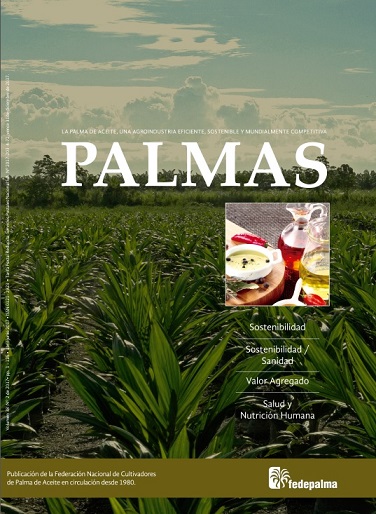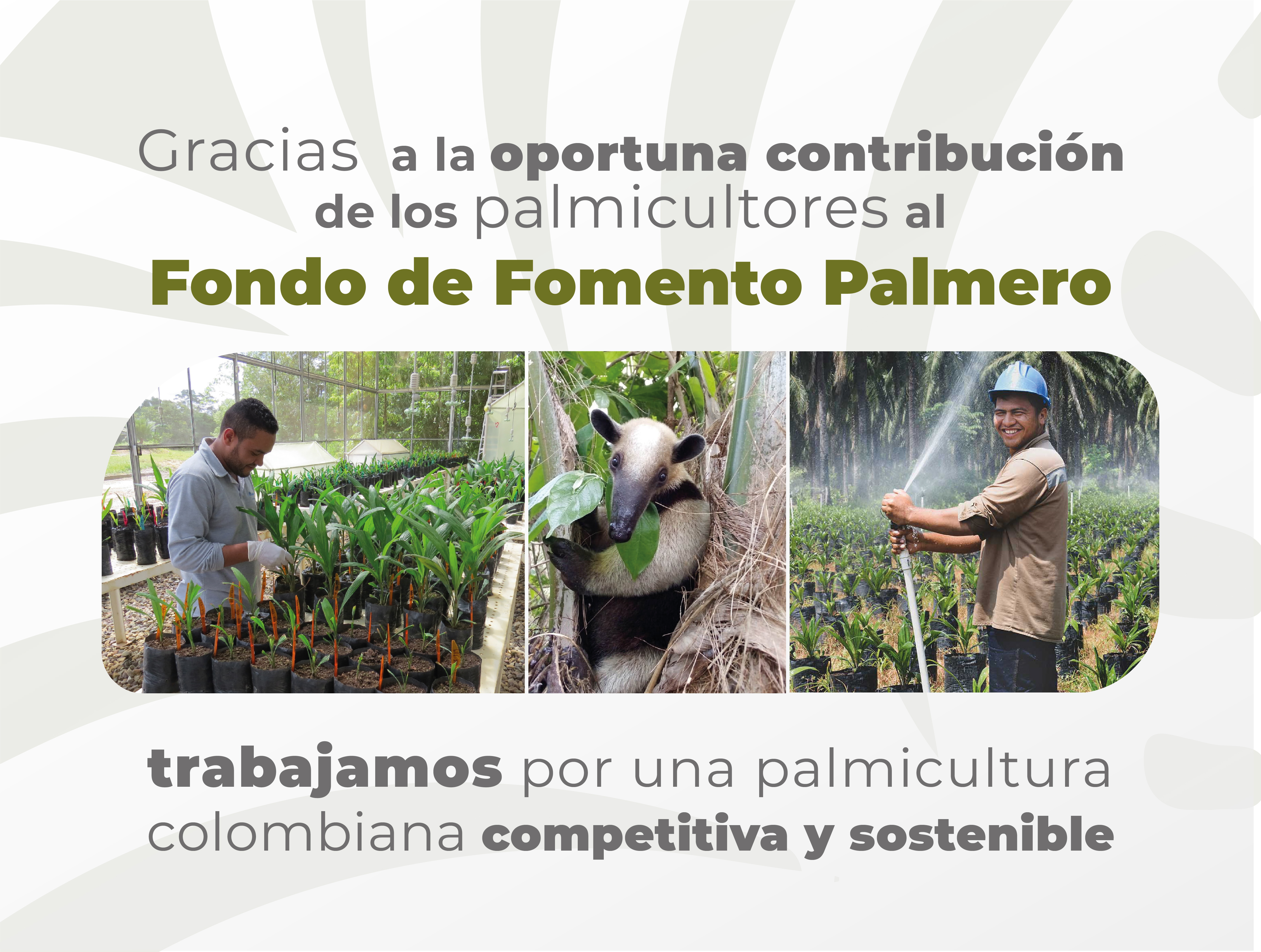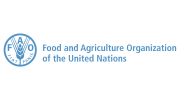Caracterización de la expansión de la palma de aceite para uso comercial en América Latina: cambio en el uso del suelo y comercialización
Palabras clave:
cultivos de productos básicos, globalización, renta del suelo, tierras anteriormente degradadas, teledetección, flujos comerciales, Von ThünenResumen
La expansión de cultivos de productos básicos ha aumentado con la globalización de los sistemas de producción y la demanda de los consumidores, enlazando de esta forma sistemas socio-ecológicos distantes. Las plantaciones de palma de aceite se expanden en los trópicos para satisfacer los crecientes mercados de semillas oleaginosas y biocombustibles. Gran parte de esta expansión ha causado deforestación a gran escala, especialmente en Asia. En América Latina, la producción de aceite de palma se ha duplicado desde 2001 y, al parecer, la mayoría de la expansión del cultivo de palma de aceite ha tenido lugar en zonas no forestales. A través de imágenes satelitales modis (resolución de 250 m), se llevó a cabo el mapeo de las actuales plantaciones de palma de aceite localizadas en América Latina. Así mismo, se determinó el uso y la cobertura del terreno (LULC, por sus siglas en inglés) utilizando imágenes en alta resolución de Google Earth. Adicionalmente, se compiló información de tipo comercial para determinar el flujo del aceite de palma latinoamericano, con el fin de obtener un mejor entendimiento de los factores subyacentes a la expansión del cultivo de palma de aceite en la región. Con base en una muestra de 342.034 ha de plantaciones de palma de aceite en Latinoamérica, se encontró que el 79 % de estas reemplazó tierras intervenidas anteriormente (pastos, tierras de cultivo, cultivos de banano); pastos para ganadería (56 %), principalmente. El 21 % restante proviene de áreas clasificadas como vegetación arbórea (bosques), principalmente en el Amazonas y en la región de Petén en el norte de Guatemala. Se pudo evidenciar que a pesar de que América Latina es un exportador neto de aceite de palma la mayoría de las exportaciones (70 %) permanecen en la región; siendo México el país que importa cerca de la mitad de este aceite. Así mismo, se encontró que el crecimiento del sector palmicultor puede estar siendo impulsado por factores globales, sin embargo, los resultados ambientales y económicos varían según la región (Asia y América Latina), al interior de las regiones (Perú y Colombia), y al interior de países (por ejemplo, Guatemala), lo cual sugiere que las condiciones locales son un factor de influencia. Se concluye que la tendencia actual de la expansión de la palma de aceite hacia tierras de vocación agropecuaria, guiada por programas de certificación internacional, representa una oportunidad para desarrollar el sector palmero de una manera más sostenible en América Latina.
Referencias bibliográficas
Alvarez-Berrios, N. L., & Aide, T. M. (2015). Global demand for gold is another threat for tropical forests. Environ. Res. Lett., 10, 029501.
Angelsen, A. (2007). Forest cover change in space and time: combining the Von Thunen and Forest Transition theories. World Bank Policy Research Working Paper.
Barbier, E. B. (2012). Scarcity, frontiers and development. Geogr. J., 178, 110-22.
Barnes, A. D., Jochum, M., Mumme, S., Haneda, N. F., Farajallah, A.,
Widarto, T. H., Brose, U. (2014). Consequences of tropical land use for multitrophic biodiversity and ecosystem functioning. Nat. Communications, 5, 5351. doi:10.1038/ncomms6351.
Brandão, F., & Schoneveld, G. (2015). The state of oil palm development in the Brazilian Amazon. Working Paper No. 198.
CIFOR. Bogor, Indonesia. Breiman, L. (2001). Random forests Mach. Learn, 45, 5-32.
Brito, M. (2014). Porquê o Óleo de Palma não avança no Brasil? En: Conferência Internacional Biodiesel BR. São Paulo, Brasil, Noviembre de 2014.
Butler, R. A., & Laurance, W. F. (2009). Is oil palm the next emerging threat to the Amazon? Tropical Conservation Science, 2, 1-10.
Carlson, K. M., Curran, L. M., Asner, G. P., McDonald, A., Trigg, S. N., & Adeney, J. M. (2012). Carbon emissions from forest conversion by Kalimantan oil palm plantations. Nat. Clim. Change, 3, 283-287.
Carter, C., Finley, W., Fry, J., Jackson, D. & Willis, L. (2007). Palm oil markets and future supply. Eur. J. Lipid Sci.Technol., 109, 307-14.
Castiblanco, C., Etter, A., & Aide, T. M. (2013). Oil palm plantations in Colombia: a model of future expansion. Environ. Sci. Policy, 27, 172-183.
Castiblanco, C., Etter, A., & Ramirez, A. (2015) Impacts of oil palm expansion in Colombia: what to do socioeconomic indicators show? Land Use Policy, 44, 31-43.
César, A. S., Batalha, M. O., & Zopelari, A. L. M. S. (2013). Oil palm biodiesel: Brazil’s main challenge. Energy, 60, 485-491.
Chávez, C. (2016). Guatemala’s La Pasion River is still poisoned, nine months after an ecological disaster. Disponible en: https://news.mongabay.com/2016/02/guatemalas-la-pasion-river-isstill-poisoned-nine-months-after-an-ecological-disaster/. Accesado: 16 de febrero.
Clark, M. L., Aide, T. M., Grau, H. R., & Riner, G. (2010). A scalable approach to mapping annual land cover at 250m using MODIS time series data: A case study in the Dry Chaco ecoregion of South America. Remote Sens. Environ., 114, 2816-2832.
Craven, C. (2011). The Honduran palm oil industry: employing lessons from Malaysia in the search for economically and environmentally sustainable energy solutions. Energ. Policy, 39, 6943-6950.
DeFries, R. S., Herold, M., Verchot, L., Macedo, M. N., & Shimabukuro, Y. (2013). Export-oriented deforestation in MatoGrosso: harbinger or exception for other tropical forests? Phil. Trans. R. Soc. B., 368, 20120173.
DeFries, R. S., Rudel, T. K., Uriarte, M. & Hansen, M. (2010). Deforestation driven by urban population growth and agricultural trade in the twenty-first century. Nat. Geoscience, 3, 178-81.
De Sy, V., Herold, M., Achard, F., Beuchle, R., Clevers, J. G., Lindquist, E. & Verchot, L. (2015). Land use patterns and related carbon losses following deforestation in South America Environ. Res. Lett., 10, 124004.
Didan, K. (2015). MOD13Q1 MODIS/Terra Vegetation Indices 16-Day L3 Global 250m SIN Grid V006. NASA EOSDIS Land Processes DAAC. Disponible en: https://doi.org/10.5067/MODIS/MOD13Q1.006.
Environmental Investigation Agency – EIA (2015). Deforestation by definition: the Peruvian government fails to define forests as forests. Lima, Perú: EIA.
Erb, K. H., Krausmann, F., Lucht-Wand-Haberl, H. (2009). Embodied HANPP mapping the spatial disconnect between global biomass production and consumption. Ecol. Econ., 69, 328-34.
Etter, A., McAlpine, C., & Possingham, H. (2008). Historical patterns and drivers of landscape change in Colombia since 1500: a regionalized spatial approach. Ann. Assoc. Am. Geogr., 98 2-23.
Fedapal (2012). El Aceite de Palma en el Ecuador. Quito, Ecuador: Fedepal.
Finer, M., & Novoa, S. (2015). Large-Scale Oil Palm Causes Deforestation of Primary Forest in the Peruvian Amazon. Disponible en: http://maaproject.org/2015/04/image-4-oil-palm-projects-causedeforestation-of-primary-forest-in-the-peruvian-amazonpart-1-nueva-requena/.
Fitzherbert, E. B., Struebig, M. J., Morel, A., Danielsen, F., Bruhl, C. A., Donald, P. F., & Phalan, B. (2008). How will oil palm expansion affect biodiversity? Trends Ecol. Evol., 23 538-545.
Food and Agriculture Organization – FAO (2016). FAOSTAT Online Database 2016. Disponible en: http://foastat3.fao.org. Accesado en julio 2016.
Forero-Medina, G., & Joppa, L. (2010). Representation of global and national conservation priorities by Colombia’s protected area network. PLoS ONE, 5, e13210.
Foster, et al. (2011) Establishing the evidence base for maintaining biodiversity and ecosystem function in the oil palm landscapes of South East Asia. Phil. Trans. R. Soc. B, 366, 3277-3291.
Garcia-Ulloa, J., Sloan, S., Pacheco, P., Ghazoul, J., & Koh, L. P. (2012). Lowering environmental costs of oil-palm expansion in Colombia. Conservation Lett., 5, 366-375.
Garrett, R. D., Carlson, K. M., Rueda, X., & Noojipady, P. (2016). Assessing the potential additionality of certification by the Roundtable on Responsible Soybeans and the Roundtable on Sustainable Palm Oil. Environ. Res. Lett., 11(4), 045003.
Garrett, R. D., Lambin, E. F., & Naylor, R. L. (2013). The new economic geography of land use change: supply chain configurations and land use in the Brazilian Amazon. Land Use Policy, 34, 265-275.
Geist, H. J., & Lambin, E. F. (2002). Proximate causes and underlying driving forces of tropical deforestation. BioSicence, 52, 143-150.
Gerasimchuk, I, & Koh, P. Y. (2013). The EU biofuel policy and palm oil: cutting subsidies or cutting rainforest? Geneva: International
Institute of Sustainable Development. Disponible en: https://www.iisd.org/gsi/sites/default/files/bf_eupalmoil.pdf.
Gibbs, H. K., Ruesch, A. S., Archard, F., Clayton, M. K., Holmgren, P., Ramankutty, N., & Foley, J. A. (2010). Tropical forests were the primary sources of new agricultural land in the 1980s and 1990s. Proc. Natl Acad. Sci. USAK, 107, 16732-16737.
Gilroy, J. J., Prescott, G. W., Cardenas, J. S., Castaneda, P., Sanchez, A., Rojas-Murcia, L. E., Uribe, C. A., Haugaasen, T., & Edwards, D. P. (2014). Minimizing the biodiversity impact of Neotropical oil palm development. Glob. Change Biol. 21, 1531-1540.
Gould, K. A., Carter, D. R., & Shrestha, R. K. (2006). Extra-legal land market dynamics on a Guatemalan agricultural frontier: implications for neoliberal land policies. Land Use Policy, 23, 408-420.
Graesser, J., Aide, T. M., Grau, H. R., & Ramankutty, N. (2015). Cropland/pastureland dynamics and the slowdown of deforestation in Latin America. Environ. Res. Lett., 10, 034017.
Grau, H. R., & Aide, T. M. (2008). Globalization and land-use transitions in Latin America Ecology and Society, 13(2). Disponible en: https://www.ecologyandsociety.org/vol13/iss2/art16/.
Greogry, P., & Ingram, J. (2014). Food production and land use. In: Seto, K., & Reenberg, A. (Eds.). Rethinking Global Land Use in an Urban Era (pp. 23-34). Cambridge, MA, USA: MIT Press.
Gutiérrez-Vélez, V. H., DeFries, R., Pinedo-Vasquez, M., Uriarte, M., Padoch, C., Baethgen, W., Fernandes, K., & Lim, Y. (2011). High-yield oil palm expansion spares land at the expense of forests in the Peruvian Amazon Environ. Res. Lett., 6, 044029.
Hansen, et al. (2008). Humid tropical forest clearing from 2000 to 2005 quantified by using multitemporal and multiresolution remotely sensed data. Proc. Natl Acad. Sci., 105, 9439-9444.
Harris, N. L., Brown, S., Hagen, S. C., Saatchi, S. S., Petrova, S., Salas, W., Hansen, M. C., Potapov, P. V., & Lotsch, A. (2012). Baseline map of carbon emissions from deforestation in tropical regions. Science, 336, 1573-1576.
Hodgdon, B. D., Hughell, D., Ramos, V. H., & McNab, R. B. (2015). Deforestation trends in the Maya Biosphere Reserve. Guatemala City: Guatemala Rainforest Alliance.
Instituto de Investigación de Recursos Biológicos Alexander Von Humboldt – AvH (2000). Incentivos económicos perversos para la conservación de la biodiversidad: el caso de la palma africana. Biosintesis, 21, 1-4.
Jorgenson, A. K. (2006). Unequal ecological exchange and environmental degradation: a theoretical proposition and cross-national study of deforestation, 1990–2000. Rural Sociol., 71, 685-712.
Koh, L. P., & Wilcove, D. S. (2008). Is oil palm agriculture really destroying tropical biodiversity? Conserv Letters, 1, 60-4.
Lambin, E. F., & Meyfroidt, P. (2011). Global land use change, economic globalization, and the looming land scarcity. Proc. Natl Acad. Sci., 108, 3465-3472.
Lane, J. (2016). Biofuels mandates around the world: 2016. Disponible en: http://www.biofuelsdigest.com/bdigest/2016/01/03/biofuels-mandates-around-the-world-2016/.
Liaw, A., & Wiener, M. (2002). Classification and regression by randomForest. R. News, 2, 18-22.
Liu, J. et al. (2013). Framing sustainability in a telecoupled world. Ecol. Soc., 18, 26.
MacDonald, G. K., Brauman, K. A., Sun, S., Carlson, K. M., Cassidy, E. S., Gerber, J. S., & West, P. C. (2015). Rethinking agricultural trade relationships in an era of globalization. BioScience, 65, 275-289.
Macedo, M. N., DeFries, R. S., Morton, D. C., Stickler, C. M., Galford, G. L., & Shimabukuro, Y. E. (2012). Decoupling of deforestation and soy production in the southern Amazon during the late 2000s. Proc. Natl Acad. Sci., 109, 1341-1346.
Meyfroidt, et al. (2014). Multiple pathways of commodity crop expansion in tropical forest landscapes. Environ. Res. Lett., 9, 074012.
Monteiro-de-Carvalho, C., Silveira, S., La-Rovere, E. L., & Iwama, A. Y. (2015). Deforested and degraded land available for the expansion of palm oil for biodiesel in the state of Pará in the Brazilian Amazon. Renew. Sust. Energ. Rev., 44, 867-876.
NASA (2016). Earth Science Data Washington, DC. Disponible en: http://eospso.nasa.gov/.
Ocampo, S. (2009). Agroindustria y conflicto armado: El caso de la palma de aceite. Colombia Internacional, 70, 169-190.
Pacheco, P. (2012). Soybean and oil palm expansion in Latin America. Working paper No. 90 CIFOR. Bogor: Indonesia. doi: 10.17528/cifor/003776.
Quezada, M. L., Arroyo-Rodriguez, V., Perez-Silva, E., & Aide, T. M. (2013). Land cover change in Lachua region, Guatemala: Patterns, proximate causes, and underlying driving forces over the last 50 years. Reg. Environ. Change, 14, 1139-1149.
R Core Team (2012). R: A language and environment for statistical computing. Vienna, Austria: R Foundation for Statistical Computing.
Richardson, D. L. (1995). The history of oil palm breeding in the United Fruit Company. ASD Oil Palm papers, 11, 1-22.
Roundtable on Sustainable Palm Oil – RSPO (2016). Impact Report 2016. Disponible en: http://www.rspo.org/key-documents/impact-reports.
Rudel, T. K., Defries, R., Asner, G. P., & Laurance, W. F. (2009). Changing drivers of deforestation and new opportunities for conservation. Conserv. Biol., 23, 1396-1405.
Sabogal, C. R. (2008). Análisis especial de la correlación entre cultivo de palma de aceite y desplazamiento forzado en Colombia. Cuadernos de Economía, 32(61), 683-718.
Sanquetta, C. R., Netto, S. P., Dalla, A. P., Rodrigues, A. L., Behling, A. & Inoue, M. N. (2015). Quantifying biomass and carbon stocks in oil palm (Elaeis guineensis Jacq.) in Northeastern Brazil. African J. Agric. Res., 10, 4067-4075.
Savilaakso, et al. (2014). Systematic review of effects on biodiversity from oil palm production Environ. Evidence, 3(4). doi: 10.1186/2047-2382-3-4.
Sieve Analytics (2016). Land Mapper. Disponible en: www.sieve-analytics.com.
Smit et al (2013). Breaking the link between environmental degradation and oil palm expansion: a method for enabling sustainable oil palm expansion. PLoS ONE, 8, e68610.
Sorda, G., Banse, M. & Kemfert, C. (2010). An overview of biofuel policies across the world Energ. Policy, 38, 6977-6988.
Umaña, C. H. (1998). Desarrollo del cultivo de la palma de aceite en Centroamérica. Palmas, 19(Especial), 266-272.
Vijay, V., Pimm, S. L., Jenkins, C. N., & Smith, S. J. (2016). The Impacts of Oil Palm on Recent Deforestation and Biodiversity Loss. PLoS ONE, 11, e0159668.
Walker, R. (2004). Theorizing land-cover and land-use change: the case of tropical deforestation Int. Regional Sci. Rev. 27, 247-270.
Wicke, B., Sikkema, R., Dornburg, V., & Faaij, A. (2011). Exploring land use changes and the role of palm oil production in Indonesia and Malaysia. Land Use Policy, 28, 193-206.
Cómo citar
Descargas
Disciplinas:
ecología, agroindustria, palma de aceiteLenguajes:
es;, enDescargas
Publicado
Número
Sección
Métricas
| Estadísticas de artículo | |
|---|---|
| Vistas de resúmenes | |
| Vistas de PDF | |
| Descargas de PDF | |
| Vistas de HTML | |
| Otras vistas | |















